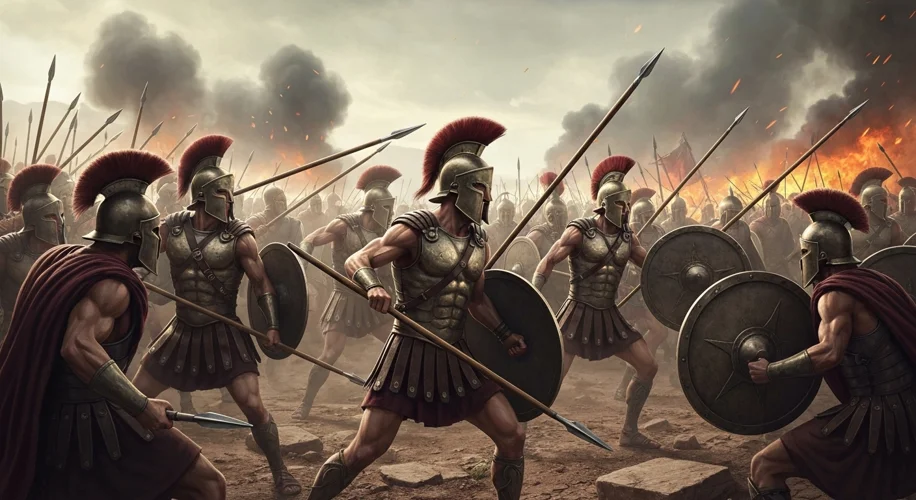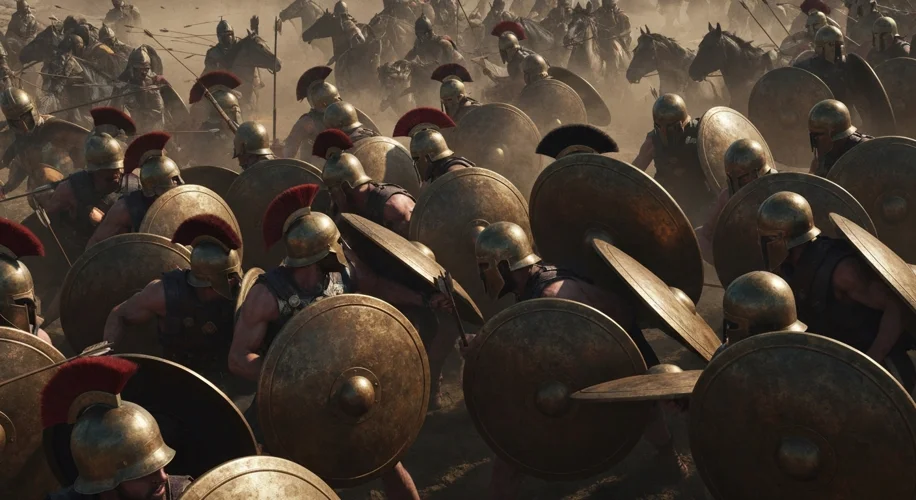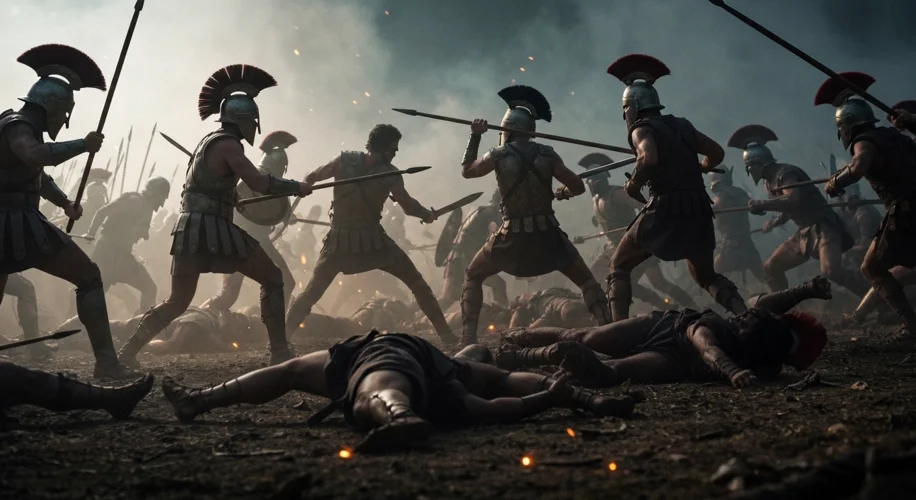The Narrow Pass, The Immovable Wall
Picture this: the year is 480 BCE. The air in Greece is thick with the scent of salt from the Aegean Sea and the metallic tang of fear. A colossal shadow, cast by the mightiest empire the world had yet known, was stretching across the land. The Persian Empire, under the ambitious Xerxes I, had amassed an army so vast it was said to drink rivers dry. Their objective: to conquer Greece, to crush its burgeoning city-states, and to absorb their vibrant culture into the vast Persian domain.
But at a place called Thermopylae – the “Hot Gates” – a name whispered with awe even today, a defiant stand was about to be made. This wasn’t a battle for territory or riches; it was a battle for freedom, for identity, for the very soul of nascent Western civilization.
A World on the Brink
To understand Thermopylae, we must first understand the world that forged it. Ancient Greece was not a unified nation but a collection of fiercely independent city-states, each with its own customs, gods, and governance. Athens, with its burgeoning democracy and philosophical advancements, and Sparta, a militaristic society obsessed with discipline and martial prowess, were the dominant powers. Yet, they were often rivals, their internal squabbles threatening to undermine their collective strength.
The Persian Empire, in contrast, was a colossal, multicultural entity. Stretching from the Indus Valley to Thrace, it was a testament to centralized power and military might. Xerxes, inheriting his father Darius’s ambition, saw Greece as a ripe fruit, ready to be plucked. The Greeks, though vastly outnumbered, possessed a spirit of liberty and a readiness to defend their homeland that would prove to be their greatest, albeit ultimately insufficient, asset.
The Gathering Storm
This wasn’t the first clash. Ten years prior, at the Battle of Marathon, a vastly outnumbered Athenian force had repelled a Persian invasion. That victory had instilled a sense of confidence, but also a grim awareness of the Persian threat. Now, Xerxes was back, not just with an army, but with a navy, aiming to subjugate all of Greece. The Persians had built a pontoon bridge across the Hellespont to march their massive land force, a testament to their engineering prowess and the sheer scale of their undertaking.
Facing this existential threat, a congress of Greek states convened. While many were cowed into submission, a brave few resolved to resist. Sparta, under the leadership of King Leonidas, agreed to provide troops, but their religious festival, the Karneia, which coincided with the Persian invasion, meant they could only send a limited force initially. However, Leonidas, a figure steeped in the Spartan ethos of courage and sacrifice, would lead a contingent of his elite warriors, the 300.
The Pillars of the Wall
King Leonidas of Sparta was no ordinary king. He was a descendant of the legendary Heracles, a warrior trained from boyhood in the brutal Spartan agoge. His reputation preceded him, a symbol of unwavering resolve. Alongside him were his 300 Spartiates, the veteran warriors who formed the backbone of the Spartan army, men whose lives were dedicated to the state and the battlefield.

But Thermopylae wasn’t solely a Spartan affair. Leonidas was joined by contingents from other Peloponnesian cities like Tegea, Mantinea, Orchomenus, and Mycenae, as well as allies from Boeotia and Phocis. The Thebans, some of whom would later be accused of betraying the Greek cause, were also present. The Persian side was dominated by Xerxes himself, a powerful monarch commanding a vast, diverse army comprising men from across his empire – Medes, Persians, Assyrians, Egyptians, and many more. Xerxes’ perspective was that of an imperial ruler, confident in his divine right and the overwhelming might of his forces, viewing the Greeks as rebellious subjects.
The Dance of Steel and Stone
The pass of Thermopylae was a natural fortress. Narrow, with sheer cliffs on one side and the sea on the other, it was designed by nature to negate the Persian advantage in numbers. Leonidas strategically positioned his forces, using the terrain to his advantage. The main Greek force held the center of the pass, while units like the Phocians were tasked with guarding a mountain path that could potentially outflank them.
For two days, the Greeks held firm. The famed Spartan phalanx, a wall of interlocking shields and bristling spears, proved an impenetrable barrier against wave after wave of Persian attacks. The Persians, clad in lighter armor and armed with bows and shorter spears, struggled to breach the disciplined Greek formation. Xerxes, reportedly watching from a nearby hill, was astounded by the ferocity and effectiveness of the Greek defense. He sent his elite Immortals, but even they could not break the Spartan resolve.

Then came the betrayal. A local Greek named Ephialtes, seeking reward from Xerxes, revealed the existence of a secret mountain path, the Anopaea path, which could be used to bypass the main Greek position. Leonidas, realizing his army was about to be enveloped, made a fateful decision. He dismissed the bulk of the Greek allies, urging them to retreat and regroup, to fight another day. He and his 300 Spartiates, along with a contingent of Thespians and Thebans, remained. They would not surrender; they would not retreat.
On the third day, the Persians advanced from both the front and the rear. The remaining Greeks, knowing their end was near, fought with a ferocity born of desperation and honor. They charged out from the defensive position, attacking the Persian ranks with a fury that momentarily threw the enemy into disarray. Leonidas fell, a king fighting like a common soldier. The battle devolved into a brutal, close-quarters struggle, the Greeks, pushed back to a small hill, fighting with their hands, their teeth, and their broken weapons until the last man fell.

Echoes Through Time
Though a tactical defeat, Thermopylae was a profound moral and strategic victory for the Greeks. The sacrifice of Leonidas and his men bought crucial time for the other Greek states to prepare their defenses. The naval battle of Artemisium, fought concurrently, also inflicted heavy losses on the Persian fleet. Crucially, the heroic stand galvanized Greek resistance, demonstrating that the seemingly invincible Persian army could be bled.
The subsequent Greek victories at Salamis and Plataea, aided by the spirit kindled at Thermopylae, ultimately repelled the Persian invasion. The Persian dream of conquering Greece was shattered. The impact of this victory resonated through the ages, preserving the independent development of Greek culture, its philosophy, its art, and its democratic ideals, which would profoundly influence the trajectory of Western civilization.
The Unyielding Spirit
Why does Thermopylae continue to captivate us? It speaks to the enduring power of courage in the face of impossible odds. Leonidas and his 300 Spartans embodied the Spartan ideal: to die for one’s state, to be a shield for the homeland. Their last stand was not a suicidal folly but a deliberate choice, a testament to their unwavering commitment to their laws and their freedom.
Herodotus, the “Father of History,” immortalized their bravery, weaving a narrative that has inspired countless generations. The story of Thermopylae transcends its historical context; it has become a universal symbol of defiance against tyranny, a reminder that even the smallest force, imbued with courage and conviction, can stand against the mightiest empire.
It’s a story that reminds us that history is not just about kings and armies, but about the choices individuals make when faced with ultimate tests. The sacrifice at Thermopylae was a sacrifice for an idea – the idea of a free people defending their way of life. And that idea, forged in the heat of battle at the “Hot Gates,” continues to echo through time, a powerful testament to the human spirit’s capacity for extraordinary bravery.

